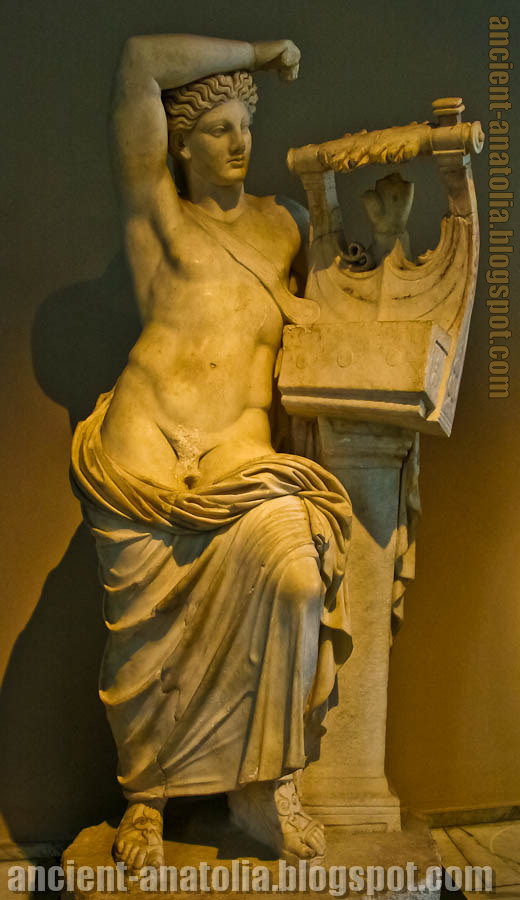
Apollo Citharoedus, Lyre Playing Apollo, the god of light, wisdom and reason. He is playing his lyre placed on a pedestal, in a group statues depicting the god Apollo and his muses, sources of inspiration, found at the Baths of Faustina in the ancient city of Miletus. It is dated to the 2nd century AD. Faustina was the daughter of Roman Emperor Antoninus Pius and the wife of Emperor Marcus Aurelius. After her death, the famous baths of Miletus were named after her. At Istanbul Archaeology Museum, Turkey.
The cithara was an ancient Greek musical instrument in the lyre or lyra family. In modern Greek the word kithara has come to mean "guitar", a word whose origins are found in kithara. The kithara was a professional version of the two-stringed lyre. As opposed to the simpler lyre, which was a folk-instrument, the cithara was primarily used by professional musicians, called citharedes. More...